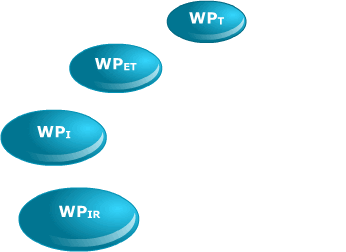![]() Explain water productivity and relate these to stakeholders’ needs
Explain water productivity and relate these to stakeholders’ needs
One of the major future challenges for agriculture is to produce more food with less water. Therefore, system performance should be evaluated in terms of water use efficiency and water productivity along with the land productivity.
Water productivity (WP) is a concept of partial productivity and denotes the amount or value of rice grains over volume or value of water used.
WP = value of rice grains (in kg per hectare) / value of water use (m3 per hectare)
To avoid confusion and interpretation in the computation of WP, it is important to clearly specify the kind of WP we are referring to and how it is derived.
Click the WP below to read its definition

Select the most appropriate stakeholder to their field of interest in Water productivity.
| Amount of transpired water (WP) |
| Optimizing the productivity of irrigation water (WP) |
| Water productivity with respect to the total water input by irrigation and rainfall (WP) |



weight of grains over cumulative weight of water inputs by irrigation
weight of grains over cumulative weight of water transpired
(also known as transpiration efficiency)
Based from the above water productivity, click here to know how much water does rice use?
Comparing WP among seasons and locations can be misleading because of differences in climatic yield potential, evaporative demands from the atmosphere or crop management practices such as fertilizer application. It is more relevant to study what the potential and actual WP values are in particular environment, and identify measures to close the gap between them, rather that to compare WP values across environment.
Now you are familiar with water productivity concepts. The next lesson is about the global water use.